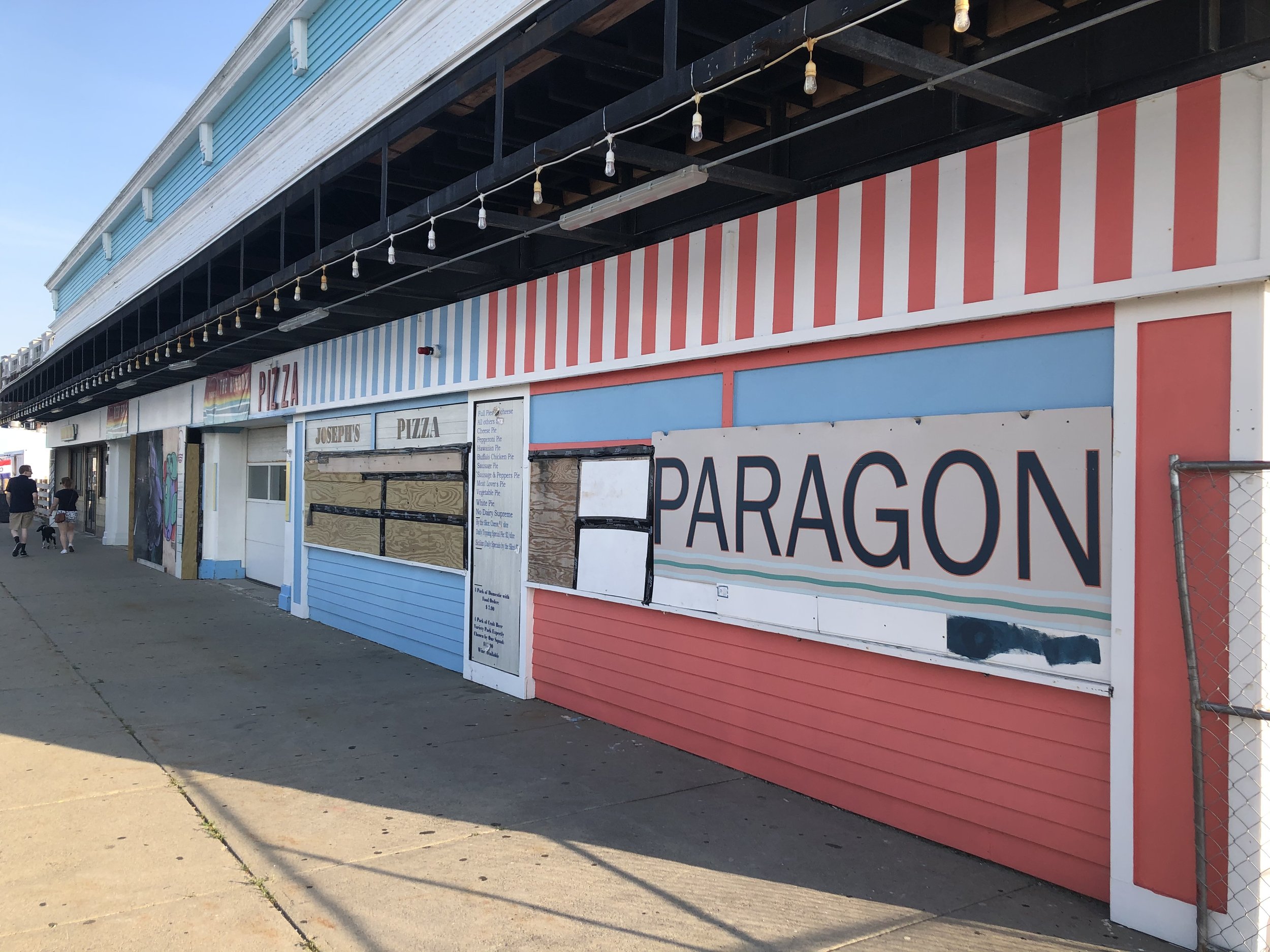Long-term strategies could include wall and drainage improvements, a home elevation program, building a raised road, or pursuing “planned retreat” of residents and natural restoration of the land.
Hampton Circle, a residential neighborhood with year-round homes, is a mini-peninsula located along the western side of Hull on the harbor-facing side of the barrier beach. Residents say they live life by the tidal cycles, according to the report: “Keeping track of low and high tides drives daily activities and helps them prepare for flooding.”
Tides are projected to increase in this area due to climate change, with exceptionally high tides documented in recent years.
Click here to read the Climate Adaptation Roadmap
Climate Adaptation & Conservation Department Director Chris Krahforst provided an update on the report to the select board and the climate adaptation committee this week.
“This is a problem area we’ve been working on for the past three years,” he said.
Public meeting scheduled for this month
A public meeting about the report will be held in the Hampton Circle area, weather permitting, this month, with more details to come.
The project is a cooperative effort among the town, the Weston & Sampson engineering team, and the state Municipal Vulnerability Preparedness program, which is funding the initiative.
The purpose of the roadmap is to identify the areas of the neighborhood that are being impacted more immediately by climate change, with adaptation and resiliency strategies still under development.
It is hoped that this process will be transferable to developing strategies in other problem areas in town, such as Cadish Avenue, as outlined in the Town of Hull Hazard Mitigation Plan 2024 Update, which is posted on the town’s website.
The report addresses a wide range of considerations, including shoreline flood mitigation, emergency access, open space improvements, private property adaptation, and ecological restoration. In short, the roadmap will serve as a guide for the town and community in envisioning the future of this area under the conditions of climate change.
Culmination of year’s work
The report – the culmination of a year’s work involving community engagement and technical analysis, the MVP, and the town – includes photographs of flooding in the area, information about projected flooding, a public engagement summary, and an overview of design options related to shoreline protection and drainage improvements to help increase climate resiliency.
“The roadmap considers climate change predictions for 2030, 2050, and 2070, including what sea level rise we may expect at those future horizons,” according to Krahforst.
The “2070 Possible Design Vision” outlined in the report is intended as a conversation starter, exploring a possible future scenario in which the Hampton Circle area is exposed to daily tidal flooding and is regularly at risk of significant storm flooding.
In this vision, flood protection is established using the 2070 1% annual chance flood elevation and builds upon 2050 mitigation strategies, keeping in place the seawalls while expanding possible floodable park space and potentially converting Moreland Avenue to a spanning bridge.
“If residents in this area accept buyouts for their homes in the future and subsidized funding to enable relocation to safer areas, the central wetland park areas could be re-naturalized to reflect its historic condition and provide greater climate resilience for the rest of the Hampton Circle Area,” according to the report.
2070 adaptation strategies could also include barrier wall and resilient drainage improvements, expansion of the home elevation grant program, a raised roadway, and pursuing planned retreat and ecological restoration in the area.
Home elevation program
The town has a partnership with the Federal Emergency Management Agency to help fund home elevations for private property, for which many Hampton Circle residents may be eligible.
“Given the projected flood vulnerability for the HCA, the neighborhood may become less habitable in the future,” the report states. “The area, which already experiences flooding from high tides, storms, and rain events, has limited access when roads become flooded. Planned retreat is one climate adaptation strategy in which property owners receive the fair market value for their property in order to relocate to a safer area.”
That said, “HCA residents are not [currently ready] to consider planned retreat in their future plans,” Krahforst said.
Immediate next steps include repairing the existing flood wall, making stormwater system improvements, and continuing home elevation program outreach to help increase participation. Another possibility is installing temporary flood protection barriers.
The town has already applied for funding from the MVP fund to complete the 75% design and develop permitting applications of wetlands restoration, culvert, tide gate, and green infrastructure designs as well as pump station relocation (fiscal year 2024-2026).
“Interim measures are being actively worked on [among various town boards and committees], because the flooding will get worse,” Town Manager Jennifer Constable said.
Phase 2 of this project will advance concept designs developed during the first phase, with continued community outreach. The project is expected to continue for the next two years.
Like what you’re reading? Stay informed with a Hull Times subscription by clicking here.
Do you have an opinion to share? Click here to write a Letter to the Editor.






















